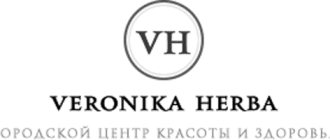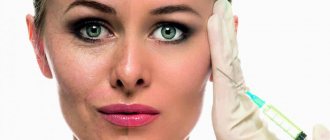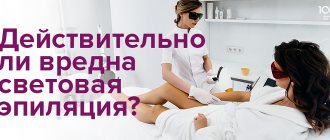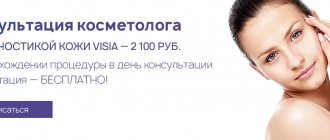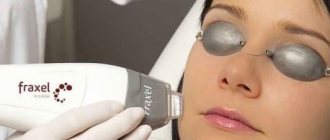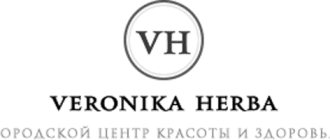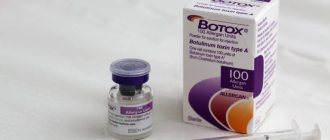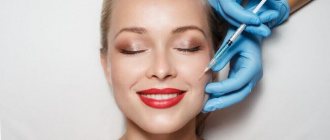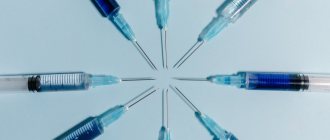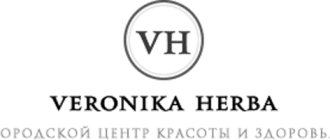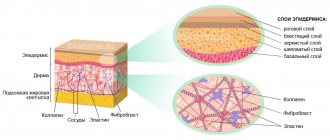From this article you will learn:
- biorevitalization: what kind of procedure is it, reviews,
- photos of patients before and after,
- injection and non-injection techniques,
- how much does biorevitalization cost - price for 1 procedure (for 2021).
Facial biorevitalization is a procedure for intradermal injection of high concentrations of active substances, which can significantly improve the appearance of the skin, increase its elasticity, as well as achieve a lifting effect and reduce the depth of wrinkles. Most often, hyaluronic acid, vitamins, microelements, amino acids are used for this, and in older age - components for intensive skin lifting, for example, peptides, DNA-RNA complexes and DMAE.
The composition of the drug is selected individually for each patient. The age of the patient, the condition of the facial skin, and, what is very important, the type of skin aging are taken into account. For example, for fine-wrinkle and deformation types of aging, completely different drugs will be indicated. An important problem is the training of specialists. How often, for example, do mesotherapists tell patients that capillary mesotherapy must be done before administering biorevitalizants? But in many cases, the severity and duration of the biorevitalization effect will depend on this.
Biorevitalization: photo of the procedure
Indications for biorevitalization –
- therapy for biological skin aging,
- photoaging therapy (including hyperpigmentation and rosacea),
- prevention of aging,
- wrinkles, thinning, decreased elasticity, dry skin,
- deterioration of the skin as a result of smoking (including the appearance of small vertical wrinkles on the lips).
Thus, the biorevitalization technique will allow you to improve the color and texture of the skin (especially for smokers), increase its elasticity, reduce the depth of wrinkles, and achieve a skin lifting effect. Additional effects of this procedure may include correction of hyperpigmentation, reduction in the severity of rosacea, as well as inflammatory elements of acne. The severity of a particular effect will directly depend on the composition of the chosen drug.
Differences between biorevitalization and mesotherapy -
Mesotherapy and biorevitalization of the face and neck are very similar procedures and are performed by the same specialists - mesotherapists. So how are they different? When it comes to intensive rejuvenation of the face and neck (using high concentrations of active ingredients), the term “biorevitalization” is used. Mesotherapy uses lower concentrations of active components, and this procedure can be performed not only on the face, but also on the body.
Thus, when it comes to the correction of cellulite or local fat deposits on the body, or procedures are carried out to improve the condition of the hair and scalp, or to improve the condition of the skin of the face and neck (but with low dosages of active substances) - this is called the term “ mesotherapy". If intensive rejuvenation and lifting of the skin of the face/neck is required, then drugs with high concentrations of active substances are used, and in this case the terms “biorevitalization” or “bioreparation” are used.
For example, the concentration of hyaluronic acid (HA) in mesopreparations is usually only from 0.3-0.5%, which corresponds to 3-5 mg/ml, and in biorevitalization products it is usually from 1.5 to 2.0% (= 15-20 mg/ml). Accordingly, in the second case, the saturation of the dermis with moisture will be much more intense, and this will lead to a more noticeable lifting effect. It is also worth noting that low molecular weight HA (with a molecular weight of about 800 kDa) is usually used in mesotherapy, and high molecular weight HA (from 1800 to 3000 kDa) is used in biorevitalization procedures.
An important point is that mesopreparations are made on a water or sol basis (sol is a liquid gel), and biorevitalizants are produced in the form of viscous gels. This greatly affects the time of drug deposition in tissues. Those. if in the first case, the drugs quickly spread in the tissues and are quickly eliminated from them, then in the second case, a drug depot is created in the tissues (at the site of each injection) for a period of approximately 2-3 weeks. That is why it is customary to inject mesopreparations once a week, and biorevitalizants - usually once every 2-3 weeks. Such differences between mesopreparations and biorevitalizants affect not only the frequency, but also the required number of procedures.
Biorevitalizants BLUM GEL low and medium concentration
They are suitable for young skin or as a component for multitherapy.
The highlight of BLUM GEL preparations is that, depending on the needs of the skin, you can assemble a lot of individual combinations from them, like from a puzzle. The protocols make it possible to carry out both monotherapy on their basis and combine the products of the line. As a result, it is possible not only to slow down the aging process, but also to respond to the special wishes of the patient. For example, raise the corners of the eyebrows, smooth out creases along the contour of the lips, wrinkles on the forehead.
Biorevitalizant BLUM GEL AMBER SHINE EYES 0.8%
This is a real find, allowing you to restore thin, delicate and dry skin around the eyes. The product with hyaluron and succinic acid is adapted to this specific task and achieves maximum effect.
· Removes signs of fatigue.
· Removes bags and circles under the eyes.
· Stimulates lymph flow, eliminating congestion.
· Copes with swelling and pastosity.
Succinic acid (sodium succinate) stimulates the synthesis of ATP in tissues, and they are the “energy station” of our cells. The tone increases, flabbiness and sagging contours go away, oxygen saturation improves, and antioxidant protection increases. Add to this all the declared effects of GC and you will get an optimal, well-designed new generation drug with a clinically pronounced effect.
Biorevitalizant BLUM GEL CLASSIC 1%
This is the same native hyaluron that we mentioned in the previous section. The manufacturer made it as close as possible in molecular weight, concentration, structure to HA contained in the intercellular fluid of the skin. It is embedded in the space between collagen fibers, restores volume by retaining water, structures protein chains, thereby improving
relief.
Biorevitalizant BLUM GEL CLASSIC 1% is a basic drug that often becomes the basis for mesotherapy and biorevitalization.
Biorevitalization with hyaluronic acid: rationale for effectiveness
Age, ultraviolet radiation, smoking and some other factors lead to gradual aging of the skin. All this leads to a gradual decrease in the activity of fibroblasts and the content of hyaluronic acid (HA) in the skin. A decrease in the activity of fibroblasts leads to a decrease in the production of collagen and elastin, which allows the skin to be firm and elastic, and due to a decrease in the level of HA in the skin, its hydration decreases. As a result, the skin becomes drier and thinner, less elastic, and wrinkles appear.
According to the developers of the biorevitalization method, facial skin rejuvenation occurs by stimulating the activity of fibroblasts that produce collagen and elastin. In addition, the skin’s production of its own HA, which allows it to be more hydrated, also depends on the activity of fibroblasts. For example, if at the age of up to 25 years fibroblasts work at 100%, then in people 25-35 years old their number and activity decrease to 75%, and at 35-45 years old - to 50%, and after 50 years or after menopause in at any age - their number and activity are no more than 25% (compared to young people).
Preparations with low molecular weight HA tend to stimulate angiogenesis and fibroblast function, but at the same time they do not moisturize the skin quite well, because Small HA chains are not able to hold many water molecules (24stoma.ru). But high-molecular HA does not stimulate anything, but retains water well, thereby perfectly moisturizing the skin. Biorevitalizants with HA are indicated primarily for patients with finely wrinkled and tired types of aging, but their use in patients with deformational (edematous) type of aging will only lead to increased swelling and gravitational ptosis of soft tissues.
It is worth saying that now mesopreparations and biorevitalizants with hyaluronic acid are used in most cases by specialists thoughtlessly, because It is believed that the larger the HA, the better. But that's not true. The fact is that when carrying out frequent injections with HA, the latter not only stimulates the activity of fibroblasts or increases skin hydration. Frequent use leads to the activation of enzymes: 1) hyaluronidase - an enzyme that destroys endogenous hyaluronic acid produced by fibroblasts, 2) metalloproteinases - enzymes that destroy the intercellular matrix. Therefore, in fact, you should not do injections with HA more than once a month, and it is better to alternate them with other groups of drugs.
Who is recommended for laser biorevitalization of facial skin?
Laser biorevitalization of the face is necessary for patients with skin problems such as:
- Dryness and dehydration
, as well as beginning fading due to lack of skin elasticity, due to age or some other reasons. Hyaluronic acid is the best way to moisturize the skin.
- Fine wrinkles
and poor skin condition caused by negative exposure to sunlight, bad habits, stress, etc. Once the level of hyaluronic acid decreases, the skin begins to fade. It is recommended to resort to laser biorevitalization of the face as soon as the first signs of aging appear, and even better – to prevent them.
- Traumatized skin
, the need for its speedy regeneration after such cosmetic procedures as laser resurfacing, medium chemical peels, and plastic surgeries. Without hyaluronic acid, proper cell division does not occur, which is a prerequisite for skin restoration. In injured skin, the level of hyaluronic acid increases, and its additional infusion increases the rate of cell reproduction and restoration of facial skin.
- Ural Federal District
. Laser biorevitalization of the face is used both to prepare the skin for exposure to ultraviolet radiation and to eliminate its consequences. Hyaluronic acid is indispensable for protecting cells from free radicals that appear from ultraviolet radiation, as well as for moisturizing skin that loses moisture from heat and sunlight.
- Unhealthy skin color
, pallor, pigmentation, dark circles under the eyes. A special pigment, melanin, is responsible for skin tone and antioxidant properties. Therefore, those areas of the skin in which multiple oxidative processes occur are distinguished by the presence of a large number of pigment spots. Laser biorevitalization of the face enhances the antioxidant properties in this area and returns the natural color of the skin. The fastest way to get rid of excessive pigmentation can be achieved by combining various cosmetic procedures (medium peeling, laser biorevitalization of the face) with the use of drugs that do not allow the production of melanin.
- Enlarged pores and increased sebum secretion,
if the skin is oily, problematic. Products based on hyaluronic acid affect the intensity of the sebaceous glands.
To eliminate these shortcomings, laser biorevitalization of the face will come in handy. In addition, it works very well as a preventative. But before 25 years of age, biorevitalization is most often not done.
Biorevitalization technique –
There are several injection techniques - nappage, papules, tubercles, as well as the linear-retrograde technique.
If all of them are used in mesotherapy, then when carrying out biorevitalization - everything except the “nappage” technique, which is associated with the inability of this technique to achieve deposition of the drug in the dermis. Before the biorevitalization procedure, superficial anesthesia of the skin is required using gels and creams containing from 5 to 12% of the anesthetic lidocaine. The cream is applied to the face for 15-20 minutes (under the film).
Papules (superficial or medium) –
This technique involves injections into the dermal layer of the skin, in such a way that at the site of each injection a “papule” will form, which looks like an elevation above the surface of the skin (Fig. 5). The size of the papules will depend on the volume of drug removed at each injection point. Papules can be small (micropapules), having a diameter of 1-2 mm, in which case injections are performed into the upper layers of the dermis. Each injection produces a volume of the drug of about 0.01-0.02 ml, the distance between papules is about 0.3 to 0.5 cm. Micropapules are usually made in areas with thin skin, for example, in the periorbital zone.
In areas with dense skin, papules are made of medium size - 3-4 mm in diameter, injecting 0.03-0.04 ml of the drug with each injection. The needle will penetrate into slightly deeper layers of the dermis, and the distance between papules should be about 1.5 cm. It should be noted that the larger the papules, the slower they will resolve. Usually papules disappear within 3 days, and in rare cases – up to 5-7 days. But if the doctor made medium-sized papules using a drug with partially stabilized hyaluronic acid (doctor’s mistake), then we can sympathize with you, because they will dissolve in about 3 weeks.
Superficial papules: video
Technique “tubercles” –
This technique has a big advantage, because... after it, the skin at the injection sites is practically invisible, and only traces of needle injections are visible. If with the “papules” technique injections are made with a needle placed at an angle of 15 degrees to the surface of the skin, and thus a drug depot is created in the upper or middle layers of the dermis, then with the “tubercles” technique - injections are made with a 4 mm needle at 45 degrees in the skin surface . Thus, the drug depot is created in the deeper layers of the dermis (at a depth of about 3 mm).
The distance between injections is 1.0 on the face, on the neck it is usually 1.5 cm. The disadvantage of this technique is that it is more difficult to control the volume of drug removal at each point.
Linear-retrograde technique –
This technique came from contouring, and most mesotherapists do not like it, because... technically it is the most difficult. However, it is also the most effective, and the same technique is also used for bioreinforcement of the face. If for previous techniques 4 mm needles are used, here they are 12-13 mm long. After injection, the needle is given a horizontal position, and it advances in the middle layers of the dermis parallel to the surface of the skin for its entire length. The drug is administered by retrograde movement of the needle backwards.
This technique is successfully used in the middle and lower thirds of the face - in the area of the cheekbones, cheeks, chin, corners of the mouth, facial contours (strictly along massage lines), in the neck area, and also around the eyes. It allows you to reduce the number of needle injections several times, thereby reducing the rehabilitation period. Advancing the needle 13 mm into the dermis leads to more pronounced subdermal damage (than when using 4 mm needles), which means tissue regeneration will be more active. This means that collagen synthesis will increase not only due to the introduction of active substances, but also in response to damage.
Linear-retrograde technique: video
Important: the biorevitalization procedure itself will take about 15-20 minutes. After the procedure, the skin is treated with a chlorhexidine solution. However, the indicated time does not take into account the lymphatic drainage vascular injection of the face and collar area, as well as the 15-20 minutes required to apply a special mask to the face, which will help minimize the visibility of needle injection marks and relieve redness.
What types of biorevitalization exist
There are several of them, they differ only in the method of delivering the active substance inside the skin. It acts in the same way in all cases - it slows down aging.
No. 1. Non-injection biorevitalization
Physical energy of various origins is used to deliver hyaluron.
· Cryobiorevitalization. Involves the use of cold liquid nitrogen.
· Electrobiorevitalization. Occurs on the basis of low-frequency current.
· Iontophoresis. Implies a stable galvanic current.
· Magnetophoresis. Transportation of HA is carried out under the influence of oscillations of magnetic waves.
· Oxygen biorevitalization. Uses oxygen as a “courier” delivering hyaluron to cells.
· Ultraphonophoresis. Uses the energy of ultrasonic waves.
In each case, the skin is not damaged, so only low molecular weight HA can be used for manipulation.
No. 2. Injection biorevitalization
The drug penetrates the skin as a result of injection with a syringe with an ultra-thin needle. The doctor can perform the injection manually or using a hardware attachment. In the first case, the effect is less aggressive, but the correct selection of doses of the drug and puncture sites depend on the qualifications of the specialist. With the second option, these moments are automated, but the impact is more painful.
No. 3. Laser biorevitalization
Does not violate the integrity of the skin. The laser beam delivers the required amount of biorevitalizant for the body strictly to a given depth. Errors are reduced to zero, but the procedure is not cheap, and a lasting effect requires at least 5 sessions.
Frequency of sessions
Skin cells are periodically renewed, so manipulations have to be repeated. To prevent aging, three sessions with an interval of 3-4 weeks every six months are enough. For therapy, the frequency of repetitions is determined by the cosmetologist.
Biorevitalization is an instant procedure.
The first effect can be assessed already in the clinic. It will finally become clear after the skin has been restored for 3-7 days. Be prepared that immediately after the procedure there may be papules from injections, redness from the laser and other consequences of mechanical administration of the drug. There is no need to be afraid of this - as soon as the drug is distributed and the epidermis “calms down”, the skin will take on a fresh and rested appearance, and you will notice how youth has returned to you! Share:
Important: selection of drugs for biorevitalization
In practice, we most often encounter 2 types of skin aging. Firstly, a finely wrinkled type of aging, which appears already by the age of 30, and in the eye area even earlier. This type is characterized by thin, dehydrated skin and a large number of small expression wrinkles, especially in the eye area. For this type of aging, the use of hyaluronic acid (HA) is a priority. And if in young patients 25-30 years old it is still possible to use biorevitalizants containing only HA, then in patients 30-35 years old the biorevitalizant must already contain vitamins, microminerals, amino acids, and antioxidants.
In patients aged 35-40+ years with a fine wrinkled type, the biorevitalizant should preferably contain (in addition to the above components) nucleotides and matrikin peptides. The latter stimulate collagen synthesis. Moreover, after 30-35 years with this type of aging, in order to achieve a good effect, it is desirable to carry out in parallel 2-3 procedures of capillary mesotherapy of the face, neck, collar area with vascular / drainage drugs - to stimulate lymphatic drainage and blood supply to the skin.
But if patients of this type show symptoms of skin photoaging - such as hyperpigmentation and telangiectasia, then additionally vitamin C, antioxidants (glutathione, coenzyme Q10, thioctic acid), cysteine, lightening peptides will be needed. Vitamin C and antioxidants relieve oxidative stress that occurs when exposed to solar radiation. A drug with this composition will also be useful before going on vacation to hot countries.
Deformation type of aging - but the main type of aging of most Russian women is deformation (edematous). Such patients usually have dense skin, fairly few wrinkles, a large volume of soft tissues of the face due to interstitial edema of the subcutaneous fat, and also have pronounced nasolabial folds and jowls. This type of aging develops due to impaired venous outflow in the face and neck, and is provoked primarily by problems with the cervical spine. If such patients are given drugs with GC, this will further increase the swelling of the face and, as a result, gravitational ptosis of the soft tissues.
Therefore, in such patients, capillary mesotherapy (lymphatic drainage vascular injection) takes first place, as well as, according to indications, the use of lipolytics in the area of fat pads of the face and double chin. During the first 2-3 visits, capillary mesotherapy can be carried out as a single procedure, or it can be combined immediately with the introduction of biorevitalizants. The latter, in case of deformation/edema type of aging, should contain DNA-RNA complexes, as well as vitamins (primarily vitamin C), amino acids, and peptides.
Why is “capillary mesotherapy” (vascular injection) needed?
It is impossible to achieve a pronounced biorevitalization effect (primarily with the deformation type of aging) without stimulating the blood supply to the skin and activating lymphatic drainage. This injection is carried out with vascular preparations “Artichoke”, “Gingko Biloba”, “Rutin + melito extract” or “GAG Complex DVL Capyl”. This is especially true for patients with ptosis, rosacea or complaints of facial swelling. In all these groups of patients, lymphatic drainage vascular injection of the face and cervical-collar area should be done at least 4-5 times.
The volume of vascular preparations per procedure should be no more than 5 ml. First, the cervical-collar area is treated, then injections are made in the projection of the lymph nodes - the area of the earlobes, the sternocleidomastoid muscle, in the area of the jugular fossa and clavicles, as well as in the submandibular area. After this, a series of injections are made along the massage lines of the face and the infraorbital area. In patients with a finely wrinkled type of aging, it is advisable to do 1-2 such vascular puncture procedures, but in patients with a deformational type of aging or patients over 45 years old, 5 or more procedures can be safely performed.
The combination of the drainage drug “Artichoke” with the vascular drug “Rutin + melito extract” will normalize venous outflow, activate lymphatic drainage and microcirculation. All this will remove interstitial edema of the subcutaneous fat, which will reduce the volume of soft tissues and the degree of gravitational ptosis, as well as the severity of the folds. If a patient is prescribed a course of several biorevitalization procedures, then each procedure begins first with a vascular puncture and only after that are injections of the biorevitalizant given. Or the first 2-3 procedures are done only by capillary mesotherapy + soft lipolytics on the face, and biorevitalizants are added only from the 4th procedure.
Contraindications (13 prohibitions)
Biorevitalization of lips using hyaluronic acid is a serious procedure that is not recommended for everyone. You should first consult with a specialist to identify possible contraindications.
CONTRAINDICATIONS
- age under 18 years;
- increased body temperature;
- autoimmune diseases;
- benign and malignant neoplasms;
- epilepsy attacks;
- mechanical damage in the problem area;
- herpes in the acute stage;
- problems with blood clotting;
- exacerbation of chronic diseases;
- moles in the perioral area;
- tendency to form keloid scars;
- period of childbearing and breastfeeding;
- individual intolerance to the administered substance.
If at least one factor is present, you will have to postpone biorevitalization to a more appropriate time or abandon it altogether. Ignoring contraindications can lead to negative consequences.
How to choose a drug for biorevitalization -
Preparations for biorevitalization are currently produced by countless companies.
One of the main components for these purposes are hyaluronic acid (HA) molecules. Typically, the lifespan of chemically unmodified (unstabilized) HA molecules is only 24 to 48 hours. However, biorevitalizants are produced in the form of a viscous gel, which allows even unstabilized HA to be deposited for a slightly longer period, reducing the rate of its destruction. The properties of the drug are very dependent on the molecular weight of the HA chains. High molecular weight HA (from 1500 to 3300 kDa) moisturizes the skin well, but does not have a stimulating effect on fibroblasts. Low molecular weight HA has a stimulating effect on fibroblasts and angiogenesis, but rather weakly moisturizes tissues. At the same time, low-molecular HA is destroyed faster in the skin than high-molecular HA (unless, of course, it has been chemically modified). For example, the preparation “Ial-system ACP” contains stabilized low-molecular HA with a molecular size of 200 kDa.
According to the manufacturer, the degradation period of HA in this drug is 10 days, and given the size of the molecules, one can immediately understand that the drug mainly has a stimulating effect on fibroblasts, activating collagen synthesis in them, but the moisturizing effect of such a drug will be less pronounced than if we will use a drug with high molecular weight HA with a molecular size of, for example, 1800 kDa or more. Next we look at the percentage of HA content in the drug. For drugs with unstabilized HA, its optimal concentration is 1.8-2.0%, but if we are talking about drugs with stabilized HA, then 1.4% is enough.
Important: modern data suggests that preparations with hyaluronic acid should not be used more than once a month, because frequent administration of high concentrations of HA leads to - 1) increased production of the enzyme hyaluronidase, which accelerates the destruction of its own HA synthesized by fibroblasts, 2) enhances the activity of metalloprotease enzymes that destroy the intercellular matrix. Those. it turns out that you inject too much HA into the dermis, and the body reacts to this with a surge in the production of hyaluronidase, which will rapidly destroy not only the biosynthetic HA you introduce, but also its own endogenous HA produced by fibroblasts.
Therefore, it is worth using biorevitalizants with HA no more than once a month, alternating them, for example, with nucleotides. Or another option is to use biorevitalizants with stabilized HA, which has the property of gradually releasing chains of active hyaluronic acid without creating excessively high concentrations of active HA molecules in the tissues over a short period of time. Such drugs act gradually and over a longer period of time, and are usually administered once every 3-4 weeks. Examples of drugs are “Restylane Vital”, “Juvederm Hydrate”, “HyalRepair”, etc.
Mono-preparations with hyaluronic acid –
Below we give an example of the most famous monopreparations with hyaluronic acid. Please note that in any case it makes sense to take such drugs only up to 30-35 years of age. After this age, it is impossible to achieve good skin lifting or intensive rejuvenation using HA alone. More or less the effect will be noticeable only after a course of 4-5 procedures, and then only if your skin is in relatively poor condition. These drugs will not be particularly effective in case of photoaging, because These do not contain a complex of components to relieve oxidative stress.
- Restylane Vital and Restylane Vital Light (Sweden) are the first biorevitalizants in which the technology of chemical modification of HA (i.e., its stabilization) was applied. The preparations contain only 2% and 1.2% hyaluronic acid, respectively, and are used in patients with finely wrinkled type of facial aging: Restylane Vital - for more mature skin, and Restylane Vital Light - to prevent aging of younger skin. Reviews: these drugs are of high quality, but their composition is outdated, and they are suitable for no more than the prevention of age-related changes, and then only with a stretch.
- Juvederm Hydrate (USA) – contains 1.35% stabilized hyaluronic acid + antioxidant mannitol. The antioxidant is quite weak, so the drug is not very suitable for the treatment and prevention of photoaging. Reviews: in our opinion, Juvederm Hydrate should be used only for the prevention of aging in patients with fine wrinkles, and no older than 30 years. A course of at least 3-4 procedures performed once every 3 weeks will be more or less effective.
- The drugs “Ial-system” and “Ial-system ACP” are a line of two biorevitalizants produced in Italy. The drug "Ial-system" contains 1.8% of unstabilized low molecular weight hyaluronic acid (molecule size only 200 kDa). Accordingly, its effect occurs quickly, but will not be too long-lasting, and besides, such a drug moisturizes the skin less - compared to drugs based on high molecular weight HA. Available in 0.6 or 1.1 ml syringes.
The second drug is “Ial-system ACP”. Available in 1.0 ml syringes and containing 2% partially stabilized low molecular weight HA (molecule size also 200 kDa). According to the manufacturer's information, HA remains in the skin a little longer - about 10 days, but this, of course, is still significantly less than the above-mentioned drugs from other brands. Reviews: in our opinion, Ial system biorevitalization is optimal only for the prevention of aging in patients no older than 35 years.
Combined preparations with HA (cocktails) –
The group of these drugs is so numerous that we will present only one of the many options - the Revofil Aquashine line of affordable drugs (made in Korea). Available in 2.0 ml syringes.
- Biorevitalizants Revofil Aquashine - the first option is “Aquashine”, containing unstabilized high molecular weight 1.5% HA, peptides, amino acids, vitamins and minerals, coenzymes (56 components in total).
In our opinion, it is better to use in patients 35+; it gives a good lifting effect when used as a course. The second option is “Aquashine BR”, which additionally adds peptides that lighten the skin, and therefore it is well suited for hyperpigmentation, for example, for aged skin 45+, as well as for the treatment and prevention of photoaging. “Aquashine BTX” – suitable for ages 30+. It also has a similar composition, but peptides are additionally added to it, the effect of which is similar to Botox®, i.e. smooth out small facial wrinkles. Aquashine biorevitalization reviews: these drugs are suitable for patients with moderate age-related changes. Not suitable for patients with deformational/edema type of aging.
Powerful biorevitalizants for aging skin –
If your age is 40-45+ and you need a noticeable lifting effect and reduction in the depth of wrinkles, then hyaluronic acid, vitamins, minerals, amino acids and antioxidants alone are no longer enough. This requires nucleotides (DNA-RNA complexes), as well as peptides and growth factors. At this and even more so at an even more mature age, the dermis contains a significantly smaller number of fibroblasts, not to mention their activity. And if there are almost no fibroblasts, then there is nothing to stimulate. This is especially true for postmenopausal women.
- Nucleotide-based drugs – an example is NucleoSpire DNA-RNA from Mesopharm®. It contains nucleotides in a concentration of 2% and is available in syringes of 1.3 and 2.0 ml. Reviews: the drug gives a delayed but pronounced lifting effect, stimulates collagen production, and is used to correct hyperpigmentation, chrono- and photoaging. Suitable for intensive rejuvenation, can be used periodically in patients 35+ and regularly after 40-45 years. Suitable also for patients with deformational (edematous) type of skin aging. A similar drug based on nucleotides is Plinest (Italy). These drugs do not work for young people.
- “Meso-Wharton P199” - this drug contains not only nucleotides, vitamins (A, E, C, group B), trace elements and antioxidants, but also high molecular weight 1.5% hyaluronic acid (with a molecular size of 3300 kDa). This drug contains growth factors, as well as peptides that stimulate the proliferation of fibroblasts and stem cells in the dermis, and also enhance the production of new collagen by fibroblasts. Not for deformation/edema type of aging.
- The “HYALREPAIR” line – biorevitalizant “Hyalrepair -02” contains 1.4% stabilized HA, vitamin C and the main amino acids involved in collagen synthesis, these are proline, glycine and lysine. An excellent product for loose, finely wrinkled skin. The drug “Hyalrepair -04” - in addition to the same hyaluronic acid, contains vitamin C, glutathione and cysteine. This drug is well suited for the treatment of photoaging, copes well with the network of fine wrinkles, hyperpigmentation and rosacea. The course of these drugs usually consists of 3 procedures at intervals of 3 weeks.
- “Nucleospire Revitalizing Complex A” is a good biorevitalizant based on 1.8% unstabilized HA, with a large amount of antioxidants (vitamin C, glutathione, thioctic acid, coenzyme Q10), vitamin B5. This composition perfectly relieves oxidative stress after sun exposure, helps moisturize the skin, lighten hyperpigmentation and prevent its formation. Those. this drug is good for photoaging, optimal before and after vacation to hot countries. You can have 30+ regularly (and even 25+, but not often).
“Nucleospire Revitalizing Complex B” (Hydro Line Extra) is a good biorevitalizant also based on 1.8% unstabilized HA, contains 19 amino acids, all B vitamins, microminerals, and the antioxidant glutathione. If the previous drug is used for the prevention and treatment of photoaging (including at a moderately young age), then this drug is for aging skin and is intended to stimulate collagen production. Naturally, it is not as effective as Meso-Wharton P199, but it also costs 2 times less.
Important : for aging skin, only a course of biorevitalization (from 3 to 7 procedures) can give a good effect. Most often, the course is carried out not with one particular drug, but with a combination of several, and their choice for each woman will be individual.
BLUM GEL preparations with high concentration and DMAE
They are suitable for patients 35+, as they provide a distinct lifting effect and rejuvenation. In this case, hyaluronic acid alone is no longer enough; preparations based on DMAE, peptides, amino acids, and RNA complexes are needed. Especially for them, BLUM GEL has released a series of highly concentrated preparations. They are also used as one of the components for treating young skin according to indications.
Biorevitalizant BLUM GEL PROLIFT 1.5%
The composition contains an optimal ratio of HA (15 mg/ml) and DMAE (dimethylaminoethanol). Its role in the human body is unique; it stimulates the synthesis of substances that are responsible for the tone and elasticity of the skin, the clarity of the oval of the face, and the firmness of tissues. With age, their content drops catastrophically, so the forms lose their elasticity. DMAE, contained in the biorevitalizant BLUM GEL PROLIFT 1.5%, triggers their production, deceiving
time.
Biorevitalizant BLUM GEL AMBER 1.5%
This is another composition based on HA and succinic acid, but unlike the already described drug BLUM GEL AMBER SHINE EYES 0.8%, it has a more universal purpose. It can be used not only for the area around the eyes, but also for the face
in general.
Biorevitalizant BLUM GEL AMBER 1.5% perfectly eliminates signs of aging, age-related pigmentation on the face, removes puffiness and sagging tissue. Due to the alkaline environment, it fights rashes, acne, seborrhea, and improves skin immunity. Thickens the epidermis, brightens it, evens out tone and reduces wrinkles.
Biorevitalizant BLUM GEL ZINC 1.8%
In addition to HA, it contains zinc, an element traditionally used in cosmetology.
· It regulates sebum production.
· Fights inflammation, acne and post-acne.
· Increases local immunity.
· Has an antioxidant effect.
· Protects skin from negative environmental influences.
· Increases its density.
Hyaluronic acid, in turn, is responsible for hydration, smoothing wrinkles, elasticity, and smoothing out the relief.
Biorevitalization: price for 1 procedure
How much biorevitalization of the face and neck costs will depend on the cost of the chosen drug, as well as the amount of the clinic’s markup. In most clinics the markup is +150-200% of the cost of the drug. Private cosmetologists usually have a markup of +100%. For the biorevitalization technique, the cost of 1 procedure in mid-price clinics will be (for 2022) –
| Biorevitalization procedure: price | rub. |
| Restylane Vital – 1.0 ml Restylane Vital (injector) – 2.0 ml | 11 000 17 000 |
| Restylane Vital Light – 1.0 ml Restylane Vital Light (injector) – 2.0 ml | 10 000 16 000 |
| Juvederm Hydrate – 1.0 ml | 9000 |
| IAL-System – 1.1 ml IAL-System ACP – 1.0 ml | 9500 10 500 |
| NucleoSpire DNA-RNA line – 2.0 ml | 8000 |
| “HyalRepair” line – 1.5 ml | 9000 |
| Meso-Wharton P199 – 1.5 ml | 13 000 |
| Aquashine – 2.0 ml Aquashine BR – 2.0 ml Aquashine BTX – 2.0 ml | 9 500 9 500 11 000 |
The purchase price for cosmetology clinics for Restylane Vital and Vital Light is about 5,000 rubles (for 1.0 ml), for Juvederm Hydrate – 4,000 rubles (for 1.0 ml), for Aquashine – about 3,500 rubles (for 2.0 ml) etc. But you must understand that the cost of the service includes anesthesia, consumables, and the cost of a special regenerating mask, which must be applied to the face after the procedure. Don’t forget about office rent, employee salaries, taxes, reimbursement of specialist training costs, etc.
→ Cost of facial mesotherapy procedures → Cost of hair mesotherapy
Suitable drugs (4 best options)
To carry out the procedure, you can use only high-quality compounds that were manufactured in compliance with accepted standards and stored correctly.
The list of popular drugs includes:
- Hyalrepair. Russian product, enriched with vitamins and polyacids, with a density of 2 mg/ml. Corrects contours and provides a lifting effect. Will not help patients with asymmetry.
- IAL-system. An Italian drug designed to saturate cells with life-giving moisture.
- Bio-R. Composition of Russian production. Suitable for adding fullness to lips and reducing the appearance of wrinkles.
- X Fill. Dermal gel from a German brand. Used for rejuvenation, increasing volume and correcting contours.
During the consultation, a cosmetologist will help identify existing problems and select a drug suitable for lip biorevitalization according to indications and price.
Facial biorevitalization: before and after photos, effect
You will have great difficulty finding real photos before and after biorevitalization, because... Cosmetology clinics post only cases of the most successful procedures, or simply take photographs of patients after hardware rejuvenation techniques, passing them off as biorevitalization procedures. The following 2 photos are from an independent clinical study. Each patient was administered 2.0 ml of Restylane Vital during 1 procedure. The course of treatment consisted of three procedures done with an interval of 4 weeks.
Biorevitalization: before and after photos (course with HA mono-drug)
As you can see: the effect of therapy with a mono-drug of hyaluronic acid in patients aged 35 and 46 years is either minimal or not noticeable at all. As we said above, patients over 30 years old need other drugs containing vitamins, amino acids, microminerals, antioxidants, and 40-45+ also nucleotides, peptides and growth factors. What do you think: will patient reviews for such facial biorevitalization be positive? It is unlikely that cosmetology clinics will post such photographs.
Example No. 2 –
The following photos were taken by cosmetologist Victoria Petrovskaya. The patient underwent a course of 4 procedures, once every 2 weeks. At the beginning of each procedure, lymphatic drainage vascular injection was first performed with the drug “GAG Complex DVL Capyl formula”, then “Hydro Line P-Anti-wrinkles formula” - for the periorbital area, and “Hydro Line Peptide formula” - for all other areas of the face. Photos were taken after the second procedure. Those. Each procedure used the same 3-drug regimen.
Example No. 3 –
The following photos were taken by cosmetologist A.Yu. Voropaeva. The patient underwent a course of 4 procedures, once every 10-14 days. At the beginning of each procedure, lymphatic drainage vascular injection was first performed with the drug “GAG Complex DVL Capyl formula”. Then, different biorevitalizants were used in each procedure -
"Nucleospire Revitalizing Complex A"- "Nucleospire DNA-RNA 2%",
- "Nucleospire Revitalizing Complex A"
- "Nucleospire DNA-RNA 2%".
Example No. 4 –
The following photos were taken by cosmetologist Irina Pyagai. The patient underwent a course of 8 procedures, once every 10 days. At the beginning of each procedure, lymphatic drainage vascular injection was first performed with the drug “GAG Complex DVL Capyl formula”. Different biorevitalizants were used in different procedures -
"Nucleospire Revitalizing Complex A"- "Nucleospire Revitalizing Complex B formula",
- "Nucleospire DNA-RNA 2%",
- "Nucleospire Revitalizing Complex B formula",
- "Nucleospire DNA-RNA 2%",
- 7. 8. procedures – “Nucleospire DNA-RNA 1% DM Peptide formula”.
What result should I expect?
As after any medical procedure, after biorevitalization the sponges will recover and return to normal. Do not forget that the skin of the lips is very thin and sensitive, which means it will suffer greatly from “beauty injections”.
After the procedure, you should avoid wearing cosmetics for a while. If you decide to carry out several procedures, then forget about lipstick for the entire period.
It is strictly forbidden to sunbathe, go to the bathhouse or sauna, fitness center and overload the entire body. In summer, it is advisable to cover your lips and use special products.
In the first days after the injections, in order to relieve swelling, swelling and redness, it is recommended to use anti-inflammatory drugs and make soothing masks. You can apply ice.
Of course, the doctor himself must prescribe creams and give the most effective mask recipe. You should not use any means yourself without consulting a specialist.
Biorevitalization of the face: reviews from doctors and patients
Over the past 10 years, the composition of drugs for mesotherapy and biorevitalization of the face has changed dramatically, and if earlier it was impossible to achieve express lifting, reducing the depth of wrinkles, and increasing collagen production, now this has become a reality. Of course, mono-preparations of hyaluronic acid can already be considered the last century of cosmetology. They are best used primarily in patients with a fine-wrinkled type of aging under the age of 25-30 years, who do not yet require intensive rejuvenation.
For patients with fine-wrinkle type of aging 30+, in addition to hyaluronic acid, vitamins (especially vitamin C), B vitamins, antioxidants that protect against photoaging, amino acids proline, glycine and lysine are very important to stimulate collagen production, cysteine is to correct hyperpigmentation. Further 40-45+, peptides, nucleotides, and growth factors that stimulate collagen production are added to the above. Remember that it is better not to use HA more than once a month, i.e. you need to combine and alternate different drugs.
An important point - remember that in patients with deformational (edematous) type of aging, the use of HA, especially its high concentrations, will only aggravate swelling and deformation of the face, and increase gravitational ptosis. In such patients, it is very important to carry out capillary mesotherapy in the amount of 4-5 procedures, and to use preparations with nucleotides, peptides, amino acids, and vitamins as biorevitalizants. The use of GC in such patients is possible only in small concentrations of 0.3-0.5% and only at the final stage of treatment.
Let us say right away that there are very few qualified mesotherapists. Most people just want to quickly inject the patient with 1.0-2.0 ml of biorevitalizant and earn money. Almost no one is engaged in activating lymphatic drainage and blood supply to the skin of the face. That is why many patients have negative reviews of biorevitalization. They say it's expensive and the effect doesn't last long.
Bioreparation and biorevitalization: differences
Recently, in advertising of injection procedures for rejuvenation, the terms “bioreparation” and “biorestructuring” can increasingly be found. It’s just that each manufacturing company is trying to differentiate itself from others, and therefore they introduce new and new terms. Essentially, the term bioreparation means “restoration.” In my opinion, speaking objectively, bioremedies include preparations with nucleotides (DNA-RNA complexes), regulatory peptides and growth factors.
Methodology (2 methods)
Today the procedure can be carried out in two ways:
- Injectable. The most effective option, since nutritional components are delivered to the deep layers of the epidermis. Disadvantage: discomfort, pain.
- Injection-free. The medicinal composition enters the skin when exposed to laser radiation. The manipulations do not cause discomfort, but do not bring such pronounced results as injections.
Let's consider the features of both methods.
Injection method (5 stages)
The procedure is carried out using the thinnest needle. Sometimes a cannula, a tube with a small diameter, is used to administer the drug.
To change the contours, injections are made intradermally, to add volume - under the mucous membrane of the lips.
Scheme:
- At the first visit, the cosmetologist conducts an examination and identifies any contraindications. Taking into account the patient’s wishes, existing problems are identified and a method for solving them is selected. The cost of biorevitalization is negotiated, and the client must sign documents confirming his consent to the procedure.
- The skin is cleansed of impurities and decorative cosmetics.
- A cream with an anesthetic effect is applied to the border of the lips, and a film is placed on top. After 30 minutes, the remaining anesthetic is removed and the skin is wiped with an antiseptic.
- Punctures can be created along the lip line at regular intervals, at the border of wet and dry mucosa. To increase the volume, many targeted injections will be required.
- After administering the drug, the cosmetologist again disinfects the treated area. To distribute the components evenly, light massage movements are performed. Ice cubes are applied to reduce bruising and swelling.
Laser technique (5 steps)
This is done as follows:
- The perioral area is also cleaned, then wiped with a disinfectant composition.
- Pulsed laser radiation is directed onto the lips to soften the tissue and open transport channels through which hyaluronic acid penetrates the skin.
- A gel-like preparation containing useful substances is applied. After this, infrared radiation is used again.
- Through thermal action, the gel is quickly absorbed into the deep layers of the skin. At the same time, skin tightening and wrinkles are smoothed out.
- After completion, the lips are wiped with an antiseptic.
Non-injection biorevitalization: reviews
The administration of medicinal substances can also be carried out using a non-injection method - by pulsed iontophoresis. The fact is that the permeability of the skin for molecules of large molecular weight (hyaluronic acid, amino acids, vitamins) is minimal, and in order to somehow increase it, pulsed discharges of weak electric current are used. A biorevitalizant solution is first applied to the skin. The procedure lasts about 45 minutes. The course consists of 6-8 procedures over 2 weeks. A repeat course is carried out after half a year.
Reviews for non-injection biorevitalization are mostly negative, which is due to the low efficiency of the method and the inability to introduce therapeutically effective concentrations of active substances into the skin. On the other hand, this technique reduces the risk of developing an infection and also eliminates the possibility of scars appearing at the site of skin punctures with a needle, which happens in patients with a tendency to ankylosis.
Before the first procedure, a microdermabrasion session must be performed, or one of the special enzyme masks must be applied. This will remove superficial dead skin cells and increase skin permeability to medicinal components. We hope that our article on the topic: Biorevitalization of the face before and after, effect, reviews – turned out to be useful to you!
Sources:
1. Add. professional
, 2. Personal experience of clinical application, 3. National Library of Medicine (USA), 4. The National Center for Biotechnology Information (USA), 5. “Aesthetic mesotherapy” (Tochinova N.A.).
Restrictions after the procedure
For several days after the procedure, you should not dye your hair or expose it to chemicals, such as permanent curling. For the first two weeks, you should not expose your hair to sudden changes in temperature (a hat is required in winter), you should not visit baths, saunas, or take a hot bath. For the same period of time, you should protect your hair from direct sunlight and do not visit a solarium. For the first few days, you should avoid scalp massage, and you can wash your hair only after two days. You should refrain from drinking alcoholic beverages for a week so as not to limit the flow of oxygen to the tissues. It is best to resume taking medications that affect blood clotting after consulting a doctor.
Restrictions after hair beauty injections are designed to consolidate the result and enhance the effect of hyaluronic acid on the hair. The flow of oxygen will ensure the best distribution of the drug in the scalp, and a positive result will not be long in coming. Whereas failure to follow the recommendations can negate the entire effect of the procedure and cause the risk of complications.
